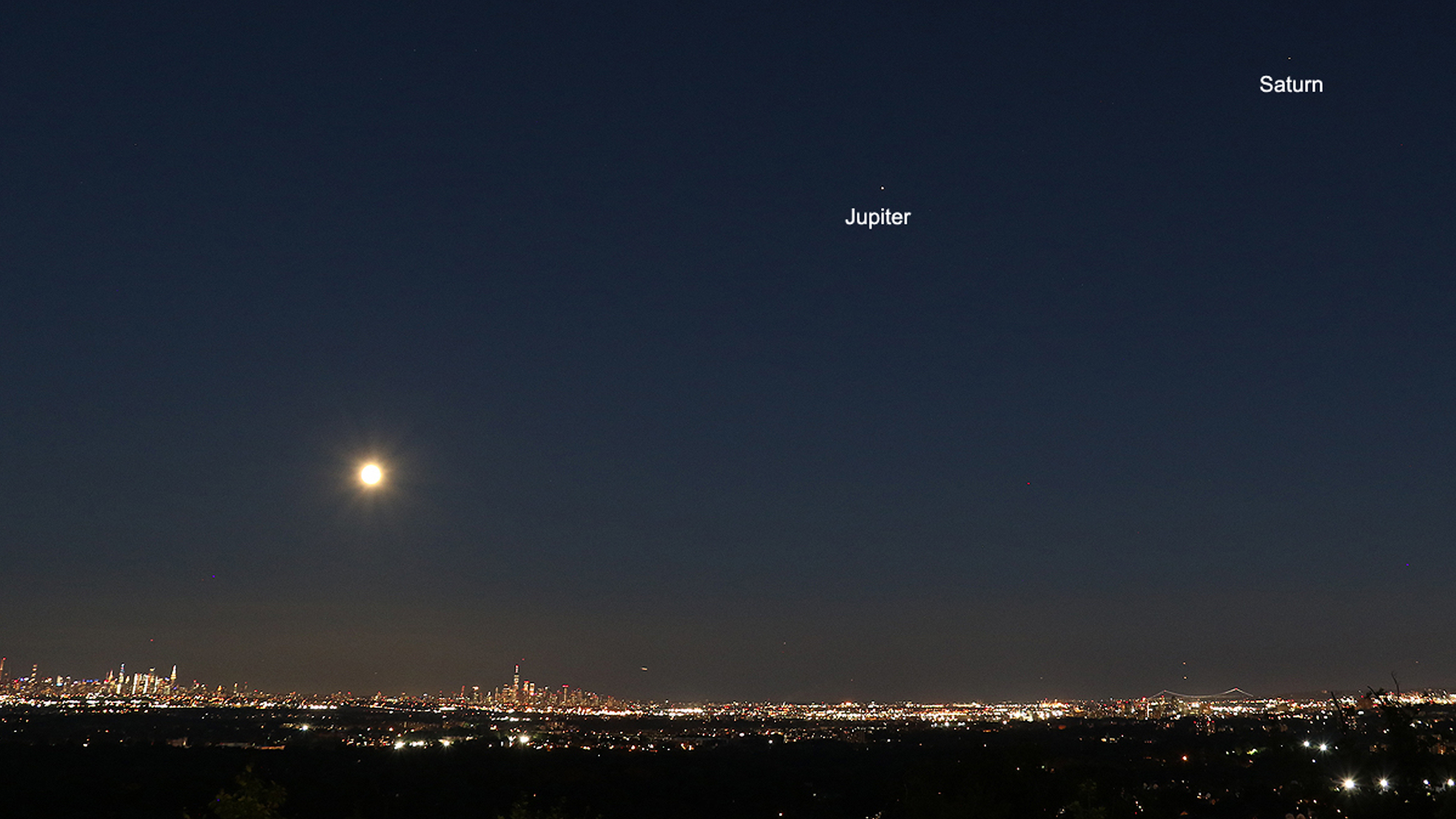Don't miss tonight's full Harvest Moon
The full moon rises just after sunset.

If you look up this evening, there's a good chance you'll see September's full Harvest Moon rise into the dark sky, just two days before the fall equinox.
To catch the moon at peak fullness, gaze upward after sunset at 7:55 p.m. EDT (11:55 p.m. GMT) on Monday (Sept. 20). If you miss that moment, don't worry; the moon will appear full until Wednesday morning (Sept. 22), the day of the autumn equinox in the Northern Hemisphere and the spring equinox in the Southern Hemisphere.
The equinox, in fact, is what gives this moon its name. The full moon closest to the autumnal equinox is known as the Harvest Moon, a term first published in 1706, according to the Oxford English Dictionary, NASA reported. Historically, farmers worked late into the night when that full moon was in the sky, using its light to help them reap the fall harvest.
Related: Photos: 2017 Great American Solar Eclipse
Other names for September's full moon include: the Fruit Moon, as a nod to fruits that are now ripening, including apples and grapes; and the Barley Moon, because the grain barley is harvested and threshed at this time. To the Algonquin tribes that live in North America, this is the Corn Moon, named for the crop staples of corn, pumpkins, beans and wild rice that grow this time of year, the Maine Farmers' Almanac reported in the 1930s, according to NASA.
Meanwhile, in the Hebrew lunar calendar, this full moon falls near the beginning of Sukkot, a seven-day Jewish holiday during which observers build temporary huts outdoors, where they can eat, sleep and spend family time together. The holiday is in remembrance of the biblical stories of a harvest festival and a time when the Hebrews lived nomadically in the wilderness for 40 years. This year, Sukkot begins at sundown on Sept. 20 and lasts until sundown on Sept. 27.
In China, Vietnam and other countries in Asia, this moon is part of the Mid-Autumn Festival, also known as the Moon Festival and the Mooncake Festival. As part of their traditions, people give offerings to the moon goddess Chang'e, which is also the name that the China National Space Agency gave their lunar missions. In Korea, this full moon corresponds with Chuseok, a harvest festival in which Koreans leave the city to return to their traditional hometowns, where they can pay respect to their ancestors' spirits.
Get the world’s most fascinating discoveries delivered straight to your inbox.
For Hindus, this full moon signals the start of Pitri (or Pitru) Paksha, when they pay homage to their ancestors, usually through food offerings. For some Buddhists, it marks the beginning of Madhu Purnima, or the Honey Full Moon Festival, which is tied to a legend about Buddha settling a feud.
On Wednesday, the whole world will experience the equinox, when the Northern and Southern Hemispheres see equal amounts of sunlight and nighttime. However, the equinox ("equal night" in Latin), doesn't account for twilight, so there may be longer daylight hours in some parts of the world, according to timeanddate.com.
The equinox will happen at 3:20 p.m. EDT (19:20 GMT) on Sept. 22, when the sun's center passes the "celestial equator," an imaginary line pointing out from Earth's equator, according to The Old Farmer's Almanac.
Originally published on Live Science.

Laura is the managing editor at Live Science. She also runs the archaeology section and the Life's Little Mysteries series. Her work has appeared in The New York Times, Scholastic, Popular Science and Spectrum, a site on autism research. She has won multiple awards from the Society of Professional Journalists and the Washington Newspaper Publishers Association for her reporting at a weekly newspaper near Seattle. Laura holds a bachelor's degree in English literature and psychology from Washington University in St. Louis and a master's degree in science writing from NYU.



